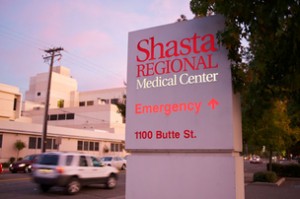Some former Prime employees claim that Dr. Prem Reddy, the chain’s founder, has urged doctors and medical coders to pad computerized bills submitted to Medicare for reimbursement with conditions that qualify for premium payouts.
Prime insists its billings are accurate, a reflection of its concern for patient care. But in the past two years, three members of Congress have asked Medicare to investigate Prime for a form of suspected billing fraud called upcoding, in which a provider files false claims via computerized billing codes to reap enhanced reimbursement.
Among the unusual conditions in Prime’s Medicare billings was kwashiorkor. According to the records, the reported outbreak at Shasta Regional Medical Center began and ended abruptly.
In 2008, the year Prime took over, the hospital reported eight cases of kwashiorkor – a rate of 0.23 percent, slightly higher than the statewide rate of 0.17 percent. In the first six months of 2009, the hospital reported two cases of kwashiorkor, according to a quarterly breakdown of hospital admission reports.
Kwashiorkor exploded after that: In the final six months of 2009, the hospital reported 301 cases of kwashiorkor. That was 16.7 percent of all the Medicare patients treated there, a rate 66 times the state average.
The rise in kwashiorkor cases at Shasta came around the time that the American Hospital Association, which advises hospitals on proper use of diagnostic codes, noted in a 2009 advisory that kwashiorkor is "extremely rare in the United States" and should be coded only when a physician specifically documented the condition.
In 2010, Shasta’s rate was even higher: The hospital claimed 727 seniors suffered from kwashiorkor, 19.4 percent of all the Medicare patients treated. In the first quarter of 2011, Shasta billed Medicare for 100 cases of kwashiorkor.
California Watch published its first report on the outsized rates in February 2011, quoting experts who questioned whether senior citizens in Northern California actually were suffering from kwashiorkor.
After that, the reports plummeted: The hospital reported six cases for the rest of the year.
The trend was similar at other Prime hospitals in California. Nine Prime hospitals that previously had billed Medicare for treating kwashiorkor reported no cases in 2011. Only one reported an increase: Garden Grove Hospital Medical Center in Orange County reported 28 cases in 2010. In 2011, it increased to 58 cases, 3.3 percent of its Medicare patients.
Bennett, the former fraud prosecutor, said the reported fluctuations in kwashiorkor cases were too extreme to reflect a genuine health care trend.
“You don’t have 100 cases in one quarter and none in the next,” she said.
Two medical experts told California Watch that they had similar concerns.
“I wouldn’t expect the trend to dramatically change,” said Dr. Matthew Butteri, a medical professor at UC Irvine and expert in geriatric medicine. It was “very hard to believe,” he said in a phone interview.
He said the data likely reflected “a coding phenomenon, rather than a trend in nutrition and disease – a phenomenon of how doctors and health care workers write in the charts and (how) a documentation specialist attempts to label the degree of malnutrition.”
Elaine Morrato, an epidemiologist and professor at the Colorado School of Public Health, said the timeline made her suspect "a change in diagnostic coding practice."
“Without more information, I cannot assess whether the change in coding corrected an intentional (perhaps fraudulent) billing practice or corrected an honest error in diagnosis,” she wrote in an email.
Christina Jewett contributed to this report.
